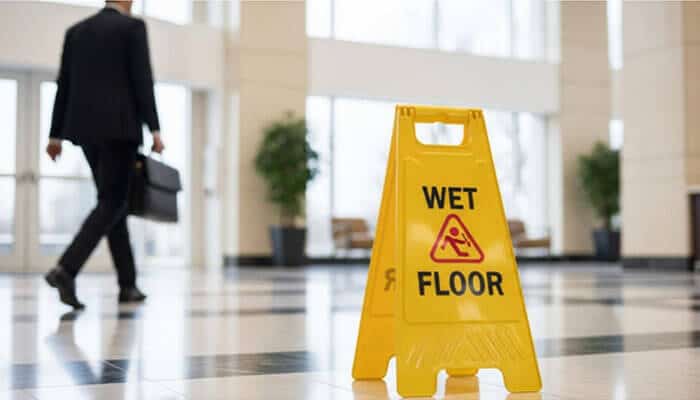We’ve all seen it. A bright yellow sign warning of a wet floor in a grocery store aisle. Most of us walk around it without a second thought. But what happens when there is no sign? When a spill isn’t cleaned up, a wobbly handrail gives way, or a poorly lit parking lot provides cover for an assault? These incidents fall under a complex area of law known as commercial injury lawyers or premises liability. And from a lawyer’s standpoint, it’s rarely as simple as pointing to a puddle and an injury.
The average person might think, “I fell on their property, so they have to pay.” That’s a common and understandable assumption. The reality, however, is a whole lot messier. Proving that a business is legally responsible for an injury involves a deep dive into evidence, timing, and a legal concept called “duty of care.” It’s a puzzle, and every piece matters.
More Than a Misstep: Unpacking Negligence and Duty of Care
Every commercial property owner — from large retailers to small local diners — has a legal duty of care to maintain a reasonably safe environment for customers and visitors. At BD&J, our personal injury attorneys understand that the definition of “reasonably safe” isn’t always straightforward. Determining what qualifies as a safe environment often becomes the central issue in a case — and that’s where our legal expertise makes all the difference.
It isn’t enough to show you were hurt. You have to prove the property owner was negligent. This means demonstrating one of three things:
- The owner or an employee caused the dangerous condition (like spilling a plate of drinks and not cleaning it up).
- The owner or an employee knew about the dangerous condition but did nothing to fix it (like seeing a broken stair and ignoring it for weeks).
- The owner or an employee should have known about the dangerous condition through reasonable care (like a recurring leak that creates a slick spot every time it rains).
That last point is often the most difficult to prove. How long was that patch of ice in the parking lot before someone slipped on it? Five minutes? Five hours? Was there a recurring plumbing issue that the manager ignored? A lawyer has to become an investigator, digging through maintenance logs, interviewing former employees, and sometimes even subpoenaing security camera footage to build a timeline that establishes negligence. It’s about proving the business failed in its duty, not just that an accident occurred.
Anticipating the Defense: The Real Chess Match Begins

As soon as a claim is filed, you can bet the business and its insurance company are already building their defense. Their primary goal is to shift the blame, and they have a few standard plays they almost always run. The most common is arguing “comparative negligence.” They’ll try to prove that you, the injured party, were at least partially at fault.
Were you on your phone and not paying attention? Were you wearing inappropriate footwear for the conditions? Were you in an area of the store that is clearly marked “Employees Only”? They will scrutinize your every action leading up to the incident. They might even argue the hazard was so “open and obvious” that any reasonable person would have seen and avoided it. A skilled attorney knows these arguments are coming and prepares for them from day one.
This is where the evidence becomes critical. Photos taken at the scene, witness statements, and expert testimony can dismantle the “it was your fault” defense before it even gets off the ground. Understanding that the property owner had a prior opportunity to fix the problem, and failed to do so, is central to the commercial injury lawyers’ perspective on winning a case. It transforms the narrative from a simple accident into a story of preventable harm.
It’s About Accountability
At the end of the day, these cases are about more than just a settlement check. They’re about public safety and corporate responsibility. When a business is held accountable for failing to maintain a safe environment, it creates a powerful incentive for them – and other businesses – to do better. It forces them to fix that broken step, improve their lighting, or implement a proper inspection routine.
So, the next time you see that yellow “wet floor” sign, you’ll know it’s more than just a piece of plastic. It’s a symbol of a legal duty – a duty to protect the public. And when that duty is ignored, it’s not just an accident; it’s a failure that the law is designed to correct.



